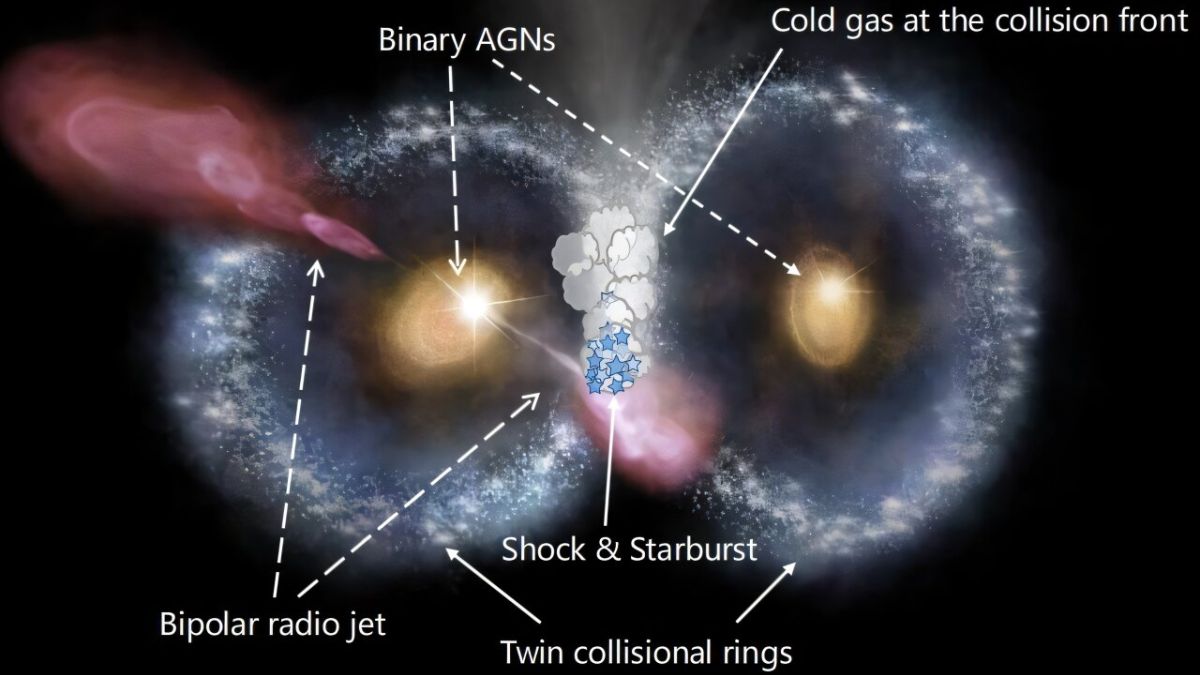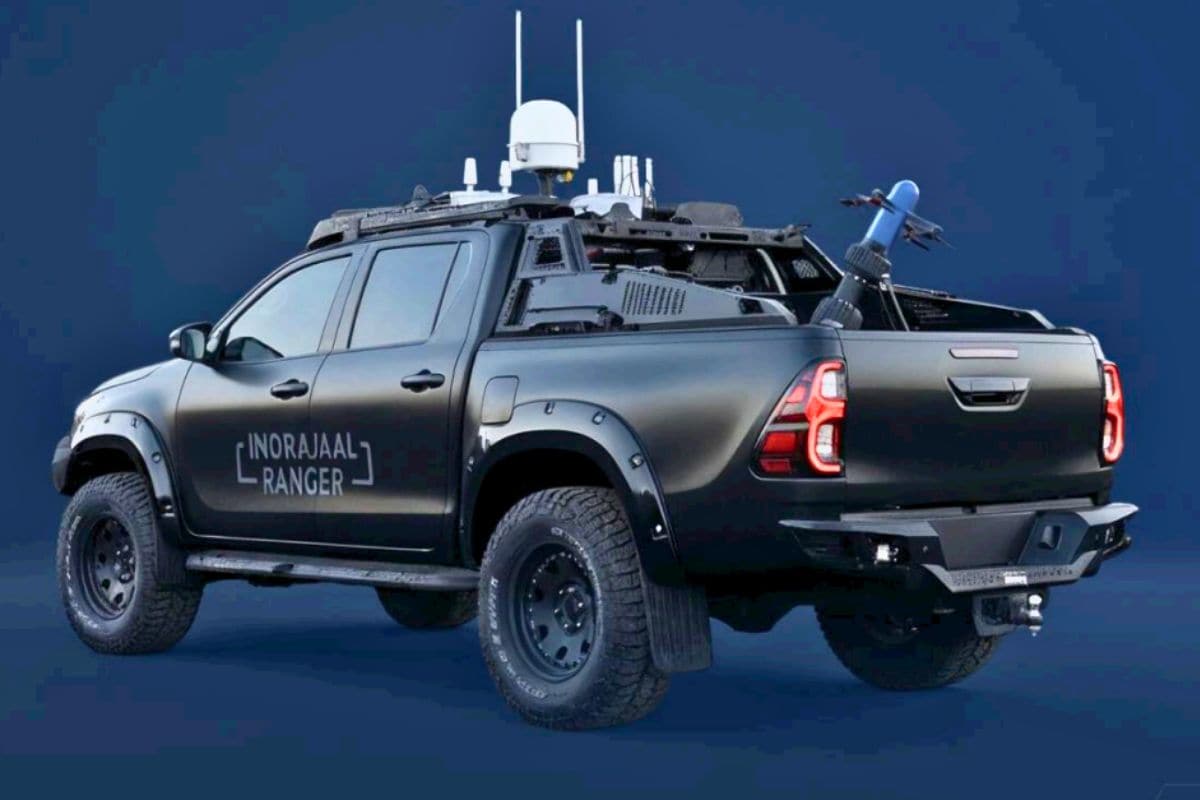NASA’s James Webb Space Telescope has captured the “Cosmic Owl,” a startling owl-faced pair of colliding ring galaxies. This double-ring structure is exceptionally rare: ring galaxies account for just 0.01% of known galaxies, and two colliding rings is almost unheard of. The JWST image provides an exceptional natural laboratory for studying galaxy evolution. Models suggest the galactic clash began roughly 38 million years ago, meaning the owl-like shape could persist for a long time. A team led by Ph.D. student Mingyu Li of Tsinghua University in China announced the finding.
Spotting the ‘Cosmic Owl’
According to Mingyu Li, the first author of the new study , he and his team found the Owl by combing through public JWST data from the COSMOS field. The twin ring galaxies jumped out thanks to JWST’s infrared imaging. Each ring is about 26,000 light-years across (a quarter of the Milky Way), and each harbors a supermassive black hole at its core – one of the Owl’s eyes.
JWST images show the collision interface – the Owl’s beak – ablaze with activity. ALMA observations find a huge clump of molecular gas there – the raw fuel for new stars – being squeezed by the impact. Radio observations show a jet from one galaxy’s black hole slamming into the gas. Li notes the shockwave-plus-jet have ignited an intense starburst, turning the beak into a stellar nursery.
Rarity and Significance
Ring galaxies are extremely rare (≈0.01% of all galaxies), so finding two in collision is unheard of. Another team independently identified the same system and called it the “Infinity Galaxy”. Li says this event is an exceptional natural laboratory for studying galaxy evolution. In one view, researchers can see black holes feeding, gas compressing and starbursts happening together.
Li points out the collision’s shockwave and jet have triggered an intense starburst in the beak. He says this may be a crucial way to turn gas into stars rapidly, which could help explain how young galaxies built up their mass so quickly. Simulations will clarify the precise collision conditions needed to produce such a rare twin-ring “owl” shape.




